Sapa Terraced Rice Field: A Highlight of Northwest Vietnam
- on Jun 25, 2018 By: Ngoc Tu DINH
Nestled in the mountainous region of northern Vietnam, Sapa has long been known for its vibrant cultures of various indigenous minority ethnic groups and cascading terraced rice fields recognized as some of Vietnam's most beautiful rice terraces.
This article aims to provide information regarding Sapa’s terraced rice fields, including the ideal period and suggested destinations to enjoy the stunning view.
Origin of the terraced rice fields
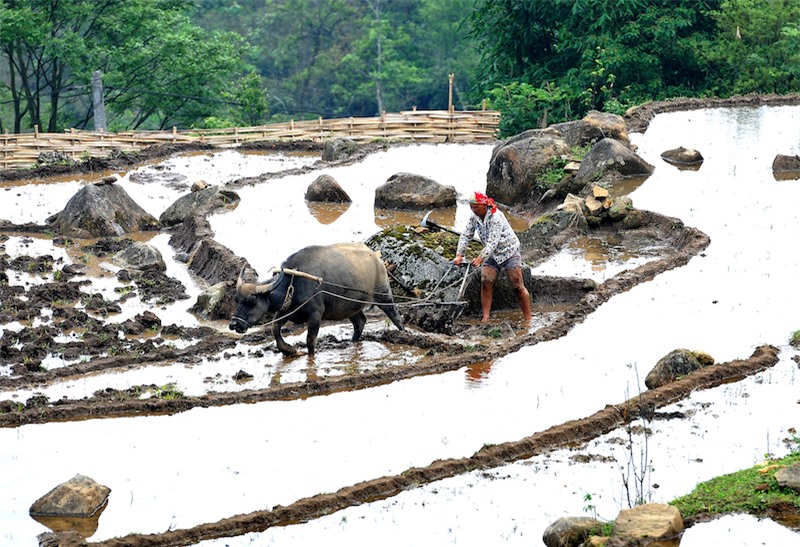
For centuries, the Northwest region of Vietnam has grappled with frequent natural disasters such as flash floods and soil erosion, making it impossible to cultivate as it is done in the plains. In response, the indigenous farmers had to find a different cultivation method to adapt. The terraced rice fields method was found and continues to be utilized today owing to its effectiveness in preventing and mitigating damages caused by natural catastrophes, as well as increasing productivity and, hence, the economy. The interesting part is that when coming up with this farming method, the hard-working farmers of Northwest Vietnam did not realize that they were going to create some of the most stunning landscapes, which today have become one of the must-visit destinations in Vietnam, drawing millions of visitors to this mountainous region each year.
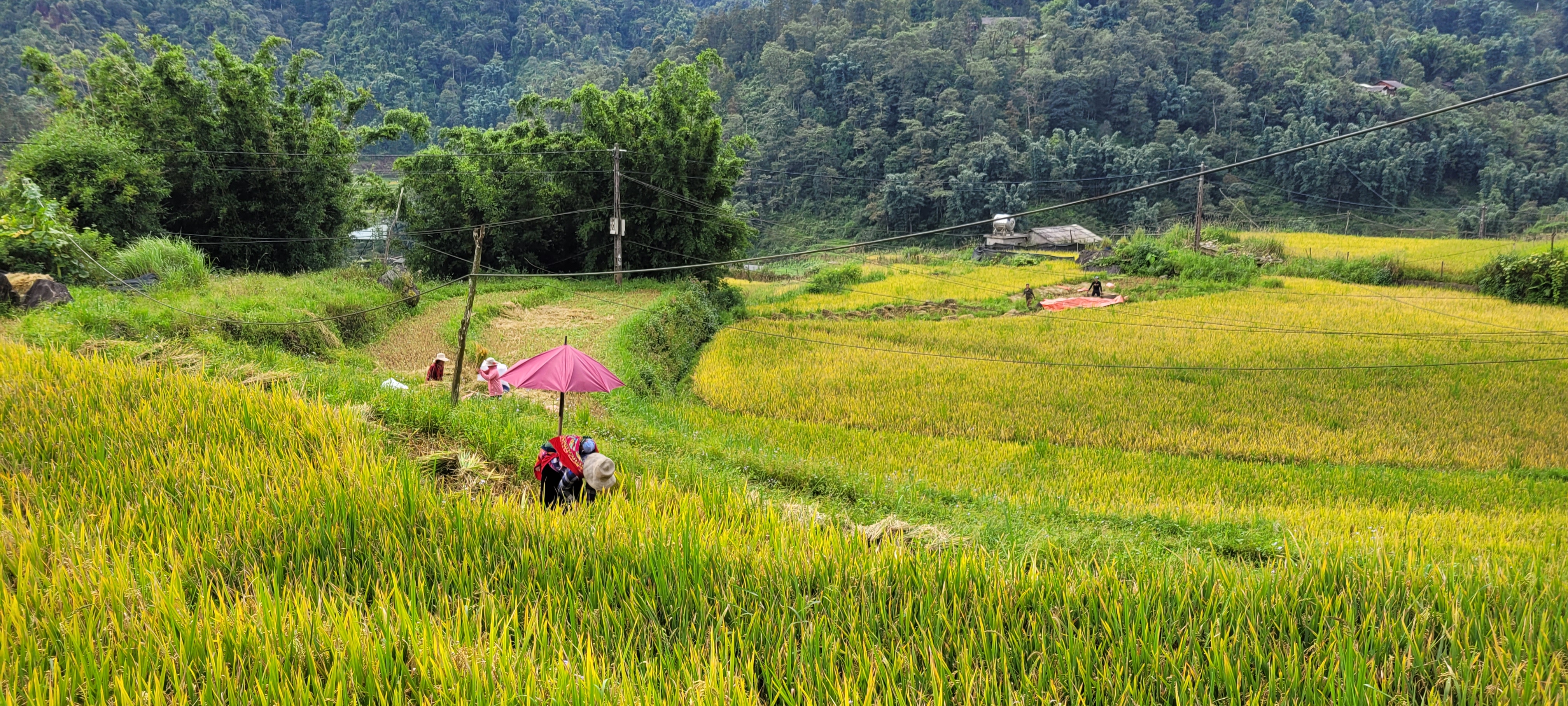
Best time to admire the rice terraces of Sapa
Sapa displays different beauty at different times of the year.
The cultivation occurs in April when the farmers start their work with irrigation. Water fills the plowed fields, creating an impressive work of art made of hundreds of shimmering mirrors reflecting the sky. Farmers spend their days working in the fields, where they embody the beautiful harmony between hardworking individuals and majestic nature.
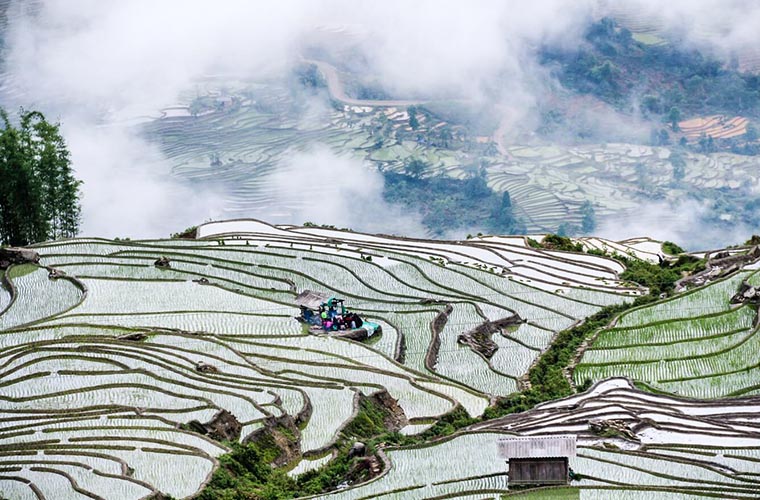
However, if the cascading golden rice terraces are what you wish for, it’s highly recommended that you visit Sapa around late August and September. During the ripe rice season, the hilly villages of Sapa brim with the pervading scent of new rice and are covered in a glamorous golden hue. This breathtaking sight, a powerful symbol of growth and the rewards of perseverance, is sure to be an unforgettable highlight of your trip to Vietnam.
Stunning rice terraces of Sapa
Here are some destinations where you can take in the beauty of the terraced rice fields of Sapa
Lao Chai Village and Ta Van Village
Head towards the Muong Hoa Valley, home to Lao Chai Village and Ta Van Village. Located approximately 10 kilometers from Sapa Town, these villages are home to various ethnic communities, including the Mong, Dao, Giay, and Tay, who have been living in harmony with nature for generations.
Following the paths winding through the hills adorned with rice terraces, you will reach Lao Chai Village, populated by around a hundred families of the Black Mong ethnic group. The Mong are renowned for their exceptional know-how in the cultivation of flooded rice. Their rice terraces, true works of agricultural art, are recognized as national heritage, demonstrating their profound connection to the land and their reverence for nature.
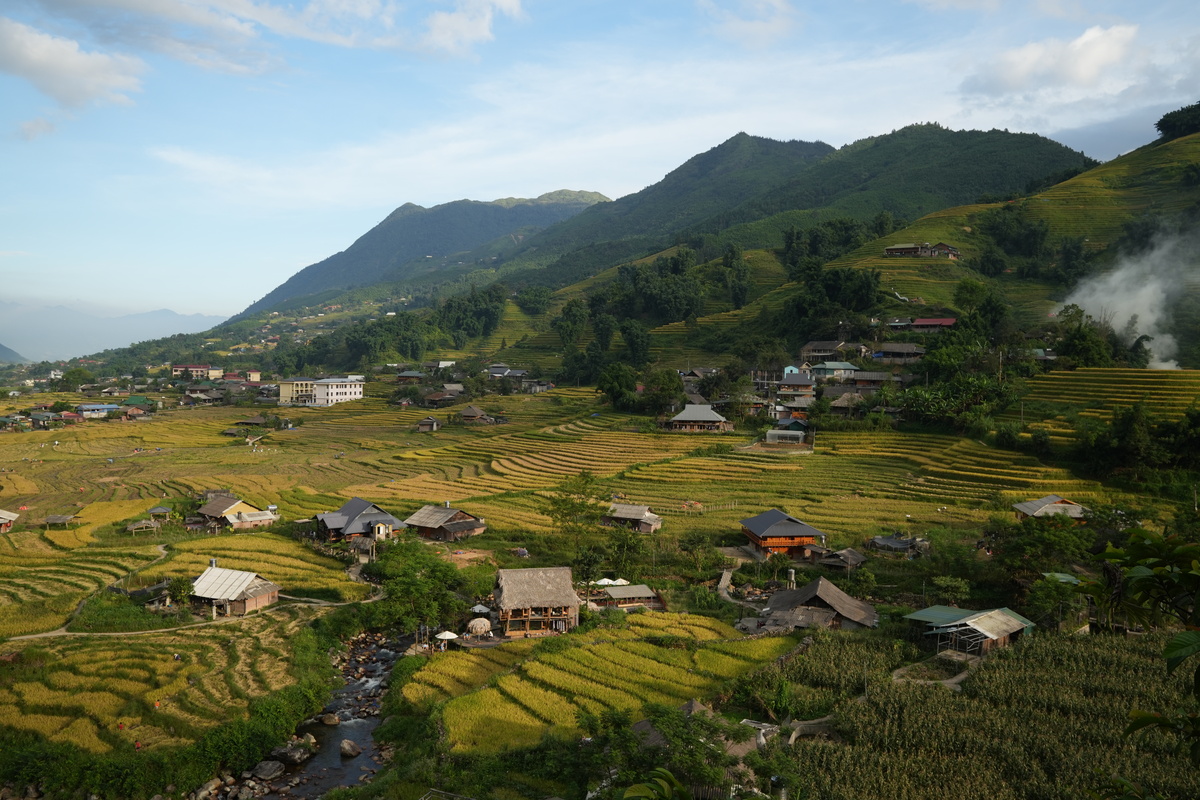
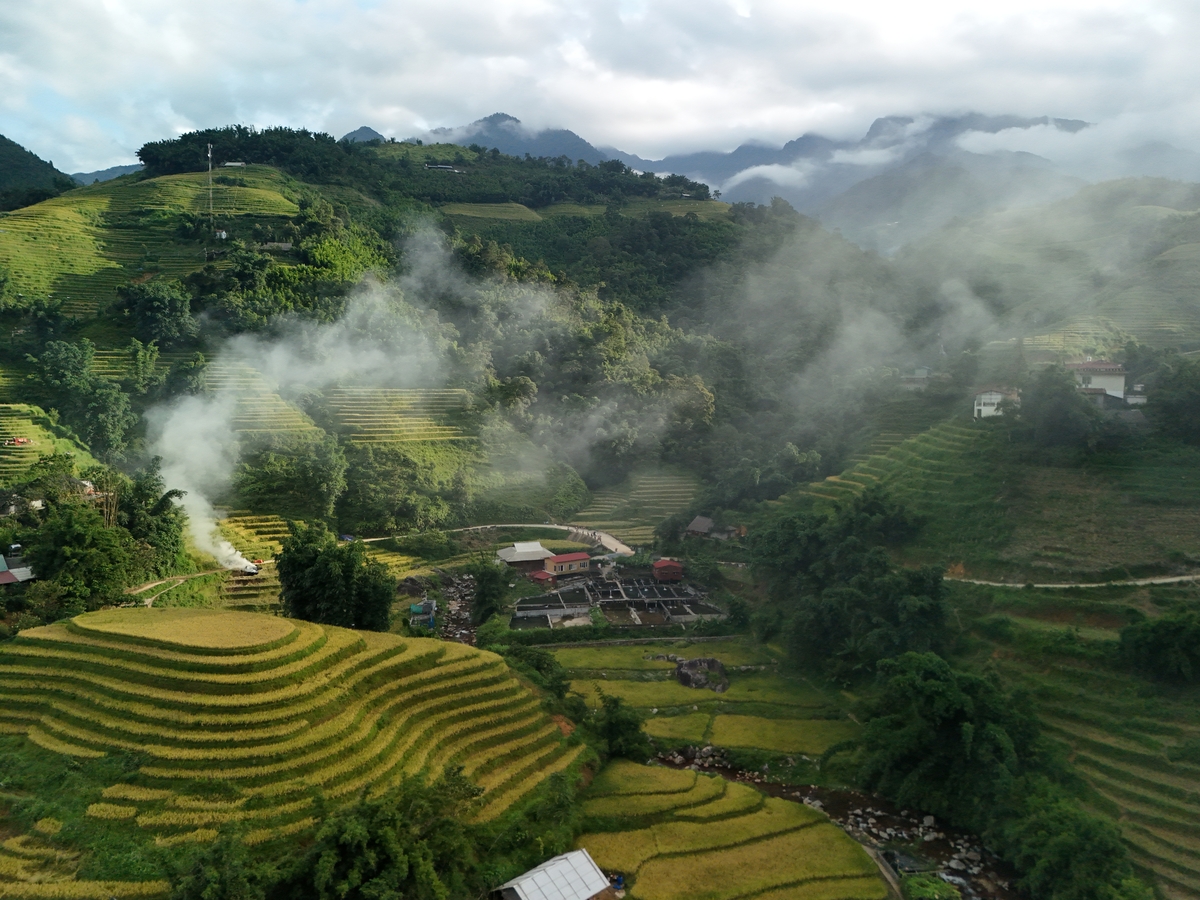
Here is a short video of Lao Chai Village filmed by Authentik Vietnam. Enjoy!
The journey then continues to Ta Van Village, where you can further immerse yourself in the culture and traditional way of life of the Giay ethnic group. Unlike the Mong, the Giay people prefer to cultivate their land at the bottom of the hills, favoring a different type of agriculture that is just as vital to their livelihood. Encounters with local people, demonstrations of traditional skills, and enriching cultural exchanges make this experience a true odyssey into the heart of Vietnamese culture.
Admire the beauty of Ta Van Village in motion with Authentik Vietnam:
>> Read more: Discover Ta Van Village: an Authentic Hidden Gem near Sapa, Vietnam
Sin Chai Village
Sin Chai Village, nestled just 2 kilometers from Sapa center, stands out for its unspoiled and tranquil character. This village is the ancestral home of the Black Mong community, whose traditions and way of life are closely linked to the land and cattle farming. The ideal time to visit Sin Chai Village is in September and early October, when the terraced rice fields turn golden and the air is filled with the scent of ripe rice, as well as the freshness of straw. Hiking in Sin Chai Village is very popular among travelers, as it allows them to discover the local customs, lifestyle, and cuisine, all while taking in the picturesque beauty of the landscape.
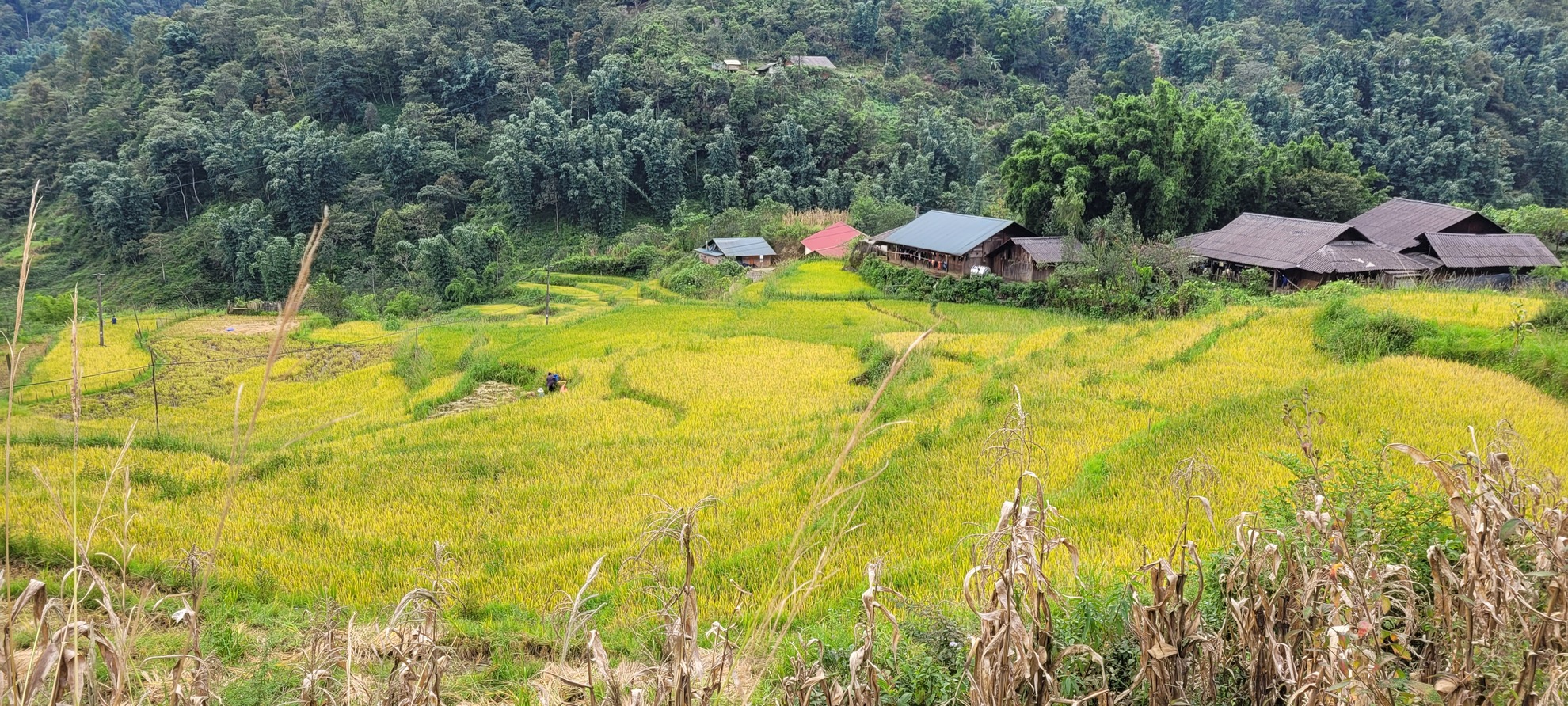
Cat Cat Village
Only 3 kilometers from the center of Sapa Town, Cat Cat Village is easily accessible by a 10-minute motorbike ride. Located at the foot of the majestic Hoang Lien Son mountain range, this village is one of the most popular destinations for tourists when visiting Sapa, renowned not only for breathtaking rice terraces but also for other enchanting natural features, such as Thac Bac Waterfall, Tien Sa Waterfall, and Mong’s traditional crafts and their preserved ancestral customs.
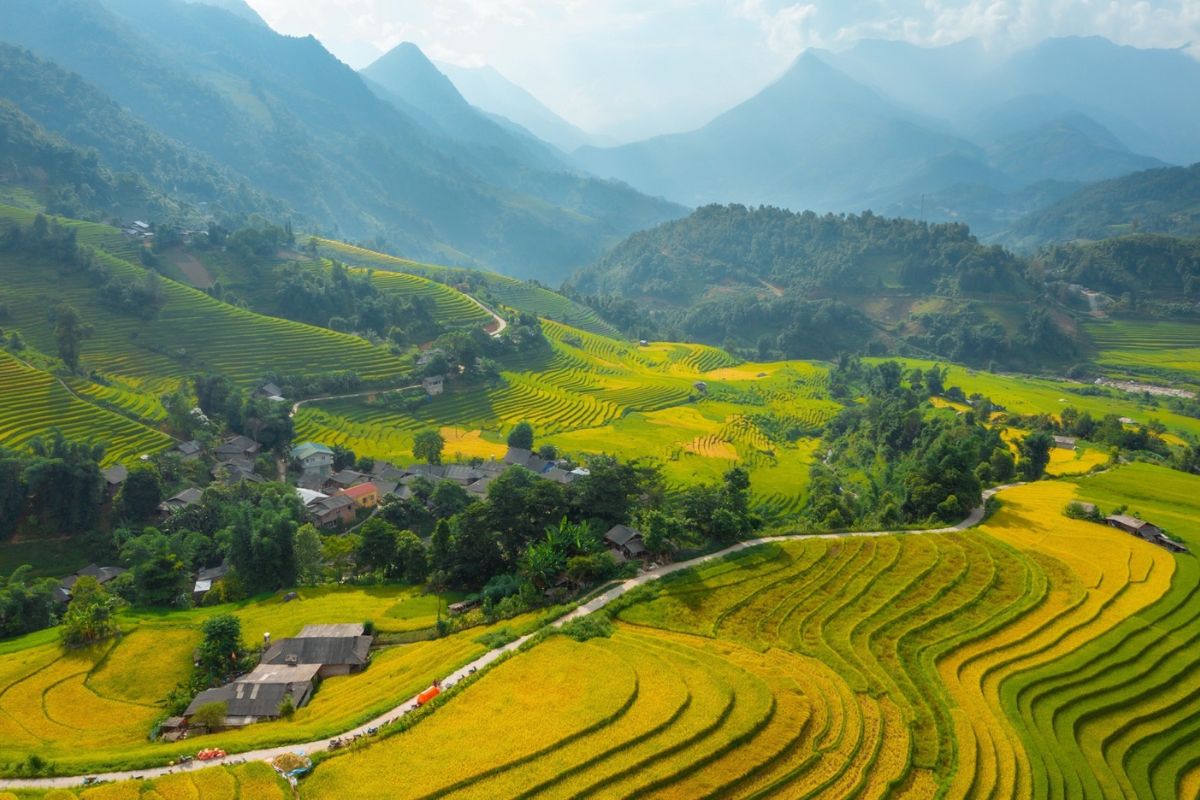
>> You might want to check this out: Cat Cat Village and 10 experiences you should not miss
Ta Phin Village
Ta Phin Village, the land of the Mong and the Red Dao, is another great destination to admire the stunning rice terraces of Sapa. Located further than the aforementioned villages, Ta Phin Village is about 17 kilometers from the center of Sapa Town and is renowned for its silk-ribbon-like terraced rice fields and serene ambiance. The roads to Ta Phin are quite challenging, so it’s recommended that you take a moto-taxi or join a trekking tour to get there.

Once just rough, rocky lands, the flourishing terraced rice fields of Sapa that we see today are not only nature's marvels but also powerful proof of human endeavor and perseverance in the face of adversity.
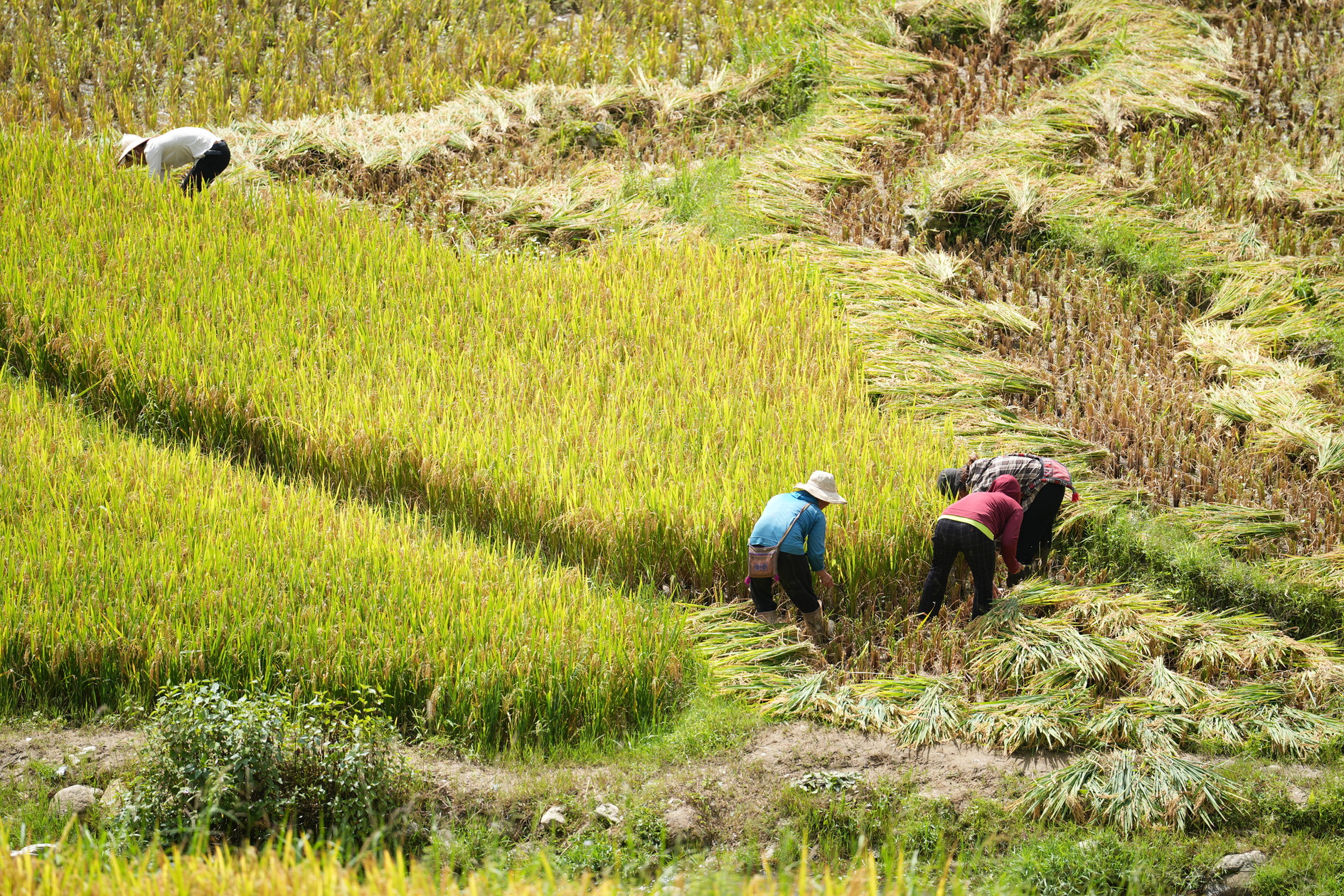
Have a quick visit to Ta Phin Village via our short video:
We hope that you have enjoyed reading this article and found it helpful for your upcoming trip to Sapa. Feel free to share your thoughts about this article as well as your feelings about your trip, and let us know if you have better ideas on how to enjoy the magnificent landscape of Sapa. If you have any questions or need any advice for your vacation in Vietnam, don't hesitate to contact us via this email address: sales@authentiktravel.com. See you soon!
Related articles:
>> Tour in Northwest of Vietnam : Where to go? Which itinerary? What to do? How many days?
>> Where and when to see the most beautiful rice fields in Northern Vietnam?
 Español
Español Français
Français
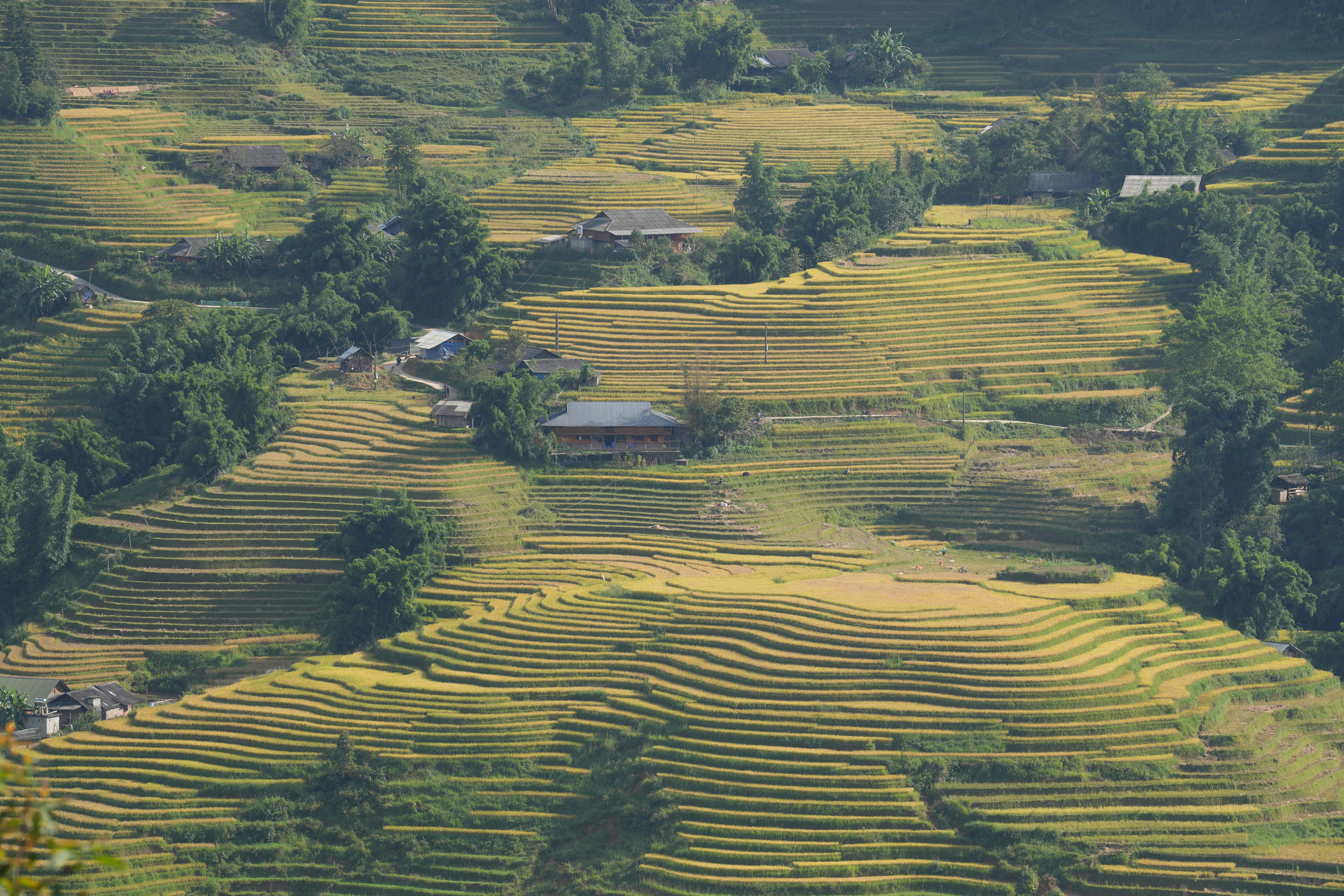
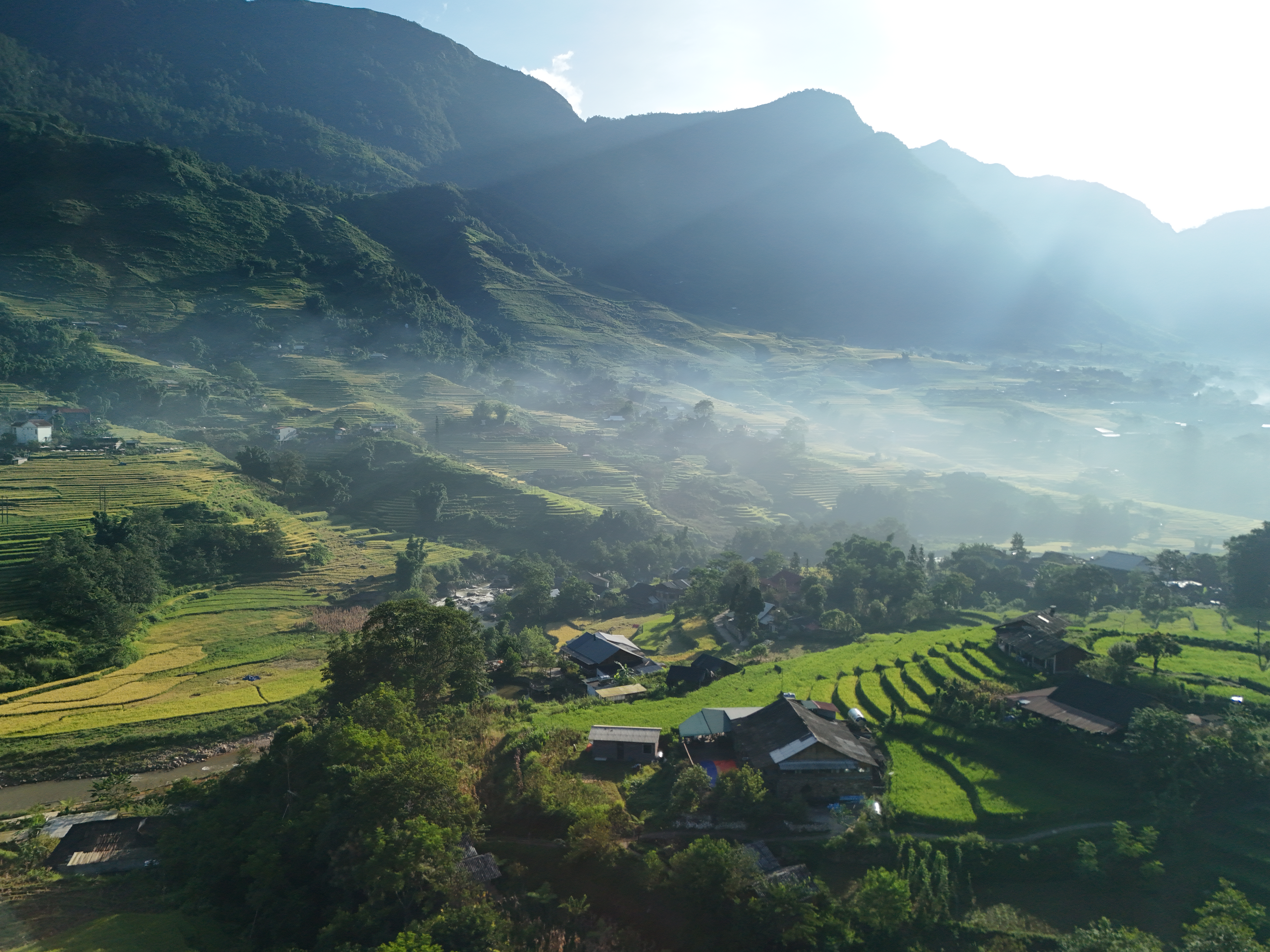







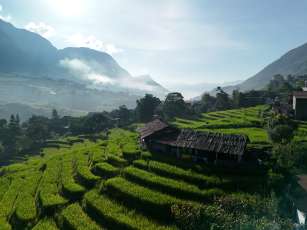
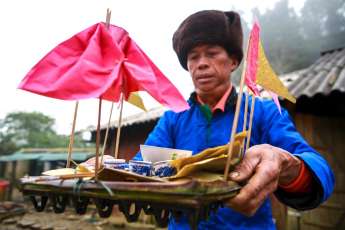
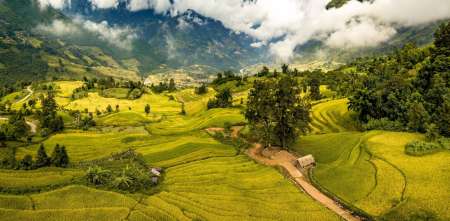
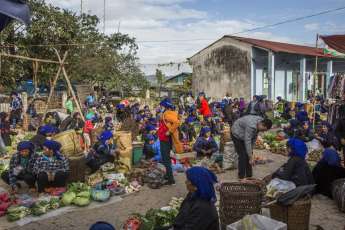
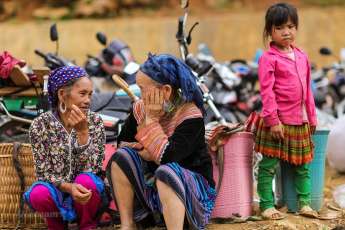
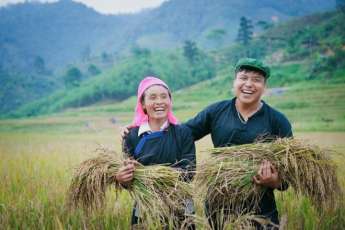







Morgane Ter Cock
on Dec 18, 2025HerbertPhomaMS
on Oct 19, 2025Lilyan Cuttler
on Oct 15, 2025Avenue17XC
on Sep 14, 2025Avenue18JL
on Jul 21, 2025